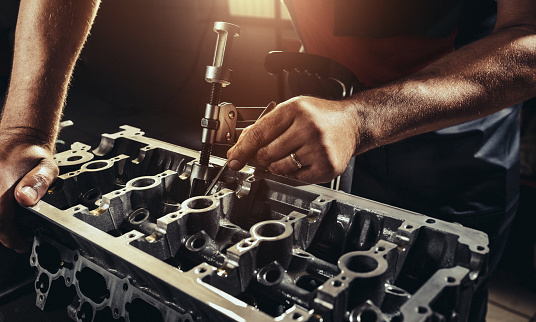January 19, 2025
Warning Signs You Need Transmission Repair
If you’re experiencing any of the following warning signs, you may need transmission repair:
- Delayed engagement or slipping gears: If your vehicle has a delay or hesitation when shifting into gear, or if it seems to slip out of gear, it could be a sign of transmission problems.
- Noisy transmission: If you hear any unusual noises, such as grinding or whining, coming from your transmission, it may be a sign that it needs repair.
- Burning smell: A burning smell coming from the transmission could indicate overheating and may lead to serious transmission damage if not addressed promptly.
- Fluid leaks: A transmission leak can cause a loss of fluid, which can lead to overheating and transmission failure.
- Dashboard warning light: If your vehicle’s check engine light or transmission warning light comes on, it’s important to have it checked out by a professional as soon as possible.
- Difficulty shifting: If you have difficulty shifting gears, such as a delay in shifting, difficulty getting into gear, or gears grinding, it may be a sign that your transmission needs repair.
- Vibrations or shaking: If you feel vibrations or shaking while driving, particularly at high speeds, it could be a sign of transmission problems.
If you’re experiencing any of these warning signs, it’s important to have your vehicle inspected by a professional mechanic to determine the root cause of the issue and to prevent further damage.
What You Can Do To Prevent Transmission Failure
Preventing transmission failure involves proactive maintenance, proper driving habits, and regular checks to ensure the health of your vehicle’s transmission system. Here’s what you can do:
1. Regular Maintenance
- Check Transmission Fluid: Monitor the fluid levels regularly. Low or dirty fluid can lead to overheating and damage.
- Change Transmission Fluid: Follow the manufacturer’s recommendations for changing the fluid and filter. This can vary but typically ranges between 30,000 to 60,000 miles for automatic transmissions.
- Inspect for Leaks: Look for red or dark brown spots under your vehicle, which can indicate a transmission fluid leak.
2. Drive Responsibly
- Avoid Overloading: Carrying excessive weight strains the transmission.
- Allow Warm-Up Time: In cold weather, let your vehicle warm up before driving.
- Shift Properly: Avoid abrupt shifting between drive and reverse and ensure the car is fully stopped before changing gears.
- Use the Parking Brake: Engage the parking brake when parked to reduce strain on the transmission.
3. Monitor Driving Conditions
- Avoid Excessive Heat: Heat is a major cause of transmission failure. Ensure your cooling system is functioning properly.
- Drive Smoothly: Avoid aggressive acceleration, braking, or unnecessary high-speed driving.
- Use the Correct Gear: When towing or driving in hilly areas, use lower gears to reduce stress on the transmission.
4. Stay Alert to Warning Signs
- Unusual Noises: Grinding, whining, or clunking sounds could indicate trouble.
- Delayed Shifting: Difficulty in shifting gears or delayed engagement is a red flag.
- Dashboard Warning Lights: A transmission warning light requires immediate attention.
5. Consult Professionals
- Regular Inspections: Have your transmission checked during routine maintenance.
- Seek Repairs Quickly: Address minor issues before they escalate into major problems.
By staying vigilant and proactive, you can extend the life of your transmission and prevent costly repairs.


